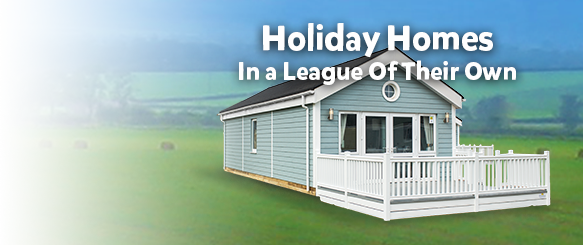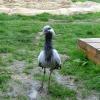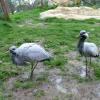The migration of a Demoiselle Crane is so long and hard that many die from hunger or tiredness.
The Demoiselle crane has long legs, a long neck and a long compressed bill. Its body is a light bluish grey, its neck is dark grey and it has light grey on the crown and on the back of the neck. It has white ear tufts and red eyes. They can grow to 90cm (36’’) and weigh up to 2.7kg (6lbs).
Although Demoiselle Cranes inhabit dry grasslands and cropland, they like to stay close to shallow water. Their diet includes, seeds, insects, small amphibians, and they occasionally feed on crops. This activity brings them into direct conflict with farmers and they are often shot as a result.
Found in eastern and central Asia, Demoiselle Cranes migrate for the winter to north eastern Africa, India and Pakistan, and can do so in their tens of thousands.
Demoiselle Cranes are capable of reaching altitudes of 16,000 to 26,000 feet (4,875 to 7,925 meters) during their Himalayan crossings, a unique aspect of the Demoiselle Crane’s migration is the “loop” migration observed in some eastern populations. They fly over the Himalayas during their outbound journey, but instead of retracing the same path, they fly around the western end of the mountains on their return
Cranes form lifelong, monogamous (only one partner) pairs. Demoiselles are very territorial when nesting, and will protect their nest vigorously. They nest on the ground close to water, and lay between one and three eggs, which hatch after a period of 27 to 29 days.
ConservationStatus
Least Concerned
Near Threatened
Vulnerable
Endangered
Critically Endangered
Extinct In The Wild



